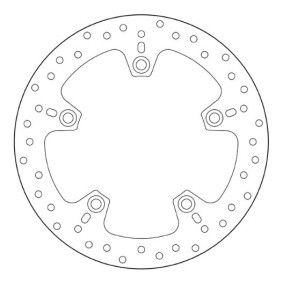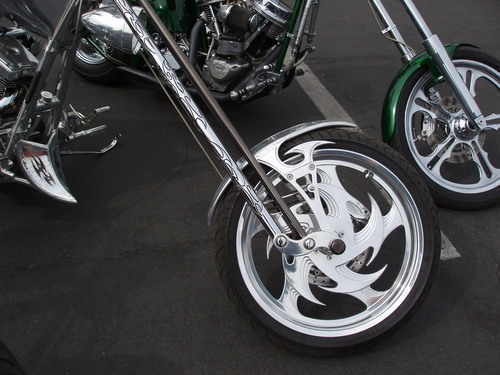Biking Across Europe - A Short Guide to Traveling by Bicycle
Posted on
Embark on a European adventure on two wheels! Discover our concise guide to biking across Europe, your key to unforgettable cycling experiences.
Many kinds of transportation have been popular in Europe for a very long time. After working hard to make travel better, routes between places have gotten very fast and environmentally friendly. Speedy trains and buses connect countries, making it easy to get around.
Biking is a fun activity and sport in Europe that people of all ages enjoy. With sports betting becoming legal in more places, some people also like betting on professional bike races. But this guide is mostly about biking for fun and sightseeing, not bike sports.
Riding a bike is an important way for many Europeans to get around towns and cities. It also lets tourists see new countries in an exciting way. Biking offers a lot, from getting around faster to exploring nature trails. Here we will talk about what makes biking in Europe special and some of the top trails.
What About Biking in the Netherlands?
When biking in the Netherlands, learn this phrase: “Uitgezonderd fietsers”. It means “except for bicycles” and marks places where cars are not allowed but bikes can still go. As a cyclist, you can go almost anywhere.
Zandvoort has miles of beaches and beautiful seaside campsites. It also has bike routes through local villages and forests, perfect for mixing cycling with outdoor adventures. It brings you close to the North Sea, where the next major cycling route in Germany begins.
Can I Bike Through Germany?
The Elbe Cycle Path in Germany stretches 900km. It passes through major cities like Hamburg and Dresden before ending in the Czech Republic.
For city travel, Germany’s big cities are very bicycle-friendly. Berlin has wide roads and usually bike lanes. Bike rentals are also easy for visitors to find.
There are a few main categories of visitors to Germany: Members of the Schengen area and countries with special agreements. Then members of countries with more relaxed entry rules who can visit for 90 days.
Can I Bike Through Austria?
Austria’s capital Vienna is one of the most bicycle-friendly cities in Europe. Bike lanes are common within the city, and the flat terrain makes exploring easy, even for beginner bikers. In some places, you can rent bikes by the half hour, with a full day of riding costing around 15 euros.
With 1,660km of bike paths, Vienna is exciting to see by bike and simple to get around. You can easily travel along the Danube River, but the best biking in Austria is outside the city.
Austria is especially popular for mountain biking. Stattegg, Leogang, and Saalbach-Hinterglemm are all popular mountain resorts for biking. If you want to experience both city and countryside biking, Austria has options for all interests.
What is Biking Like in France?
Rural France combines cycling and wine tours in a way few other countries can match. France's traditional old-world regions also make for beautiful, scenic rides. The Route Des Vins winds through vineyards and villages in Alsace. Whenever you need a break, there is usually a village or town nearby that makes a nice stopping point.
Riding in non-industrial areas helps avoid heavy traffic. If you want a famous challenging bike ride, head to Provence. A long uphill ride through vineyards and villages is difficult but rewarding.
Bike paths run throughout Paris and almost fully along the Seine River. This makes seeing the sights of Paris by bike easy for tourists. If you want to try cross-country cycling, Paris also connects to EuroVelo 3.
EuroVelo is a huge cycling network that started in 1995. Its goal is to promote cycling and connect regional and national bike routes across Europe. New additions are made to EuroVelo each year, with the aim of eventually connecting the whole continent.
EuroVelo Route 3 starts in Spain and enters France through the south. It then passes through Belgium.
What is Biking Like in Belgium?
Relative to its small size, Belgium has very diverse bike routes. Bokrijk park in Limburg offers unique cycling trails.
One section called Cycling Through Water has a carefully built path that lets you bike through the middle of a lake. Another section called Cycling Through the Trees is an elevated bike path 33 feet off the ground that rises above the forest. This gives a bird's eye view of the woods for brave cyclists.
For those interested in history over nature, Belgium has the Peace Cycle Route. This path goes through Ypres and many WWI historical sites and memorials. It explores Flanders Field itself and where the famous poem was written.
What is Biking Like in Spain?
Spain has a variety of cycling routes for all skill levels. A mix of mountain, hilly, and flat terrain offers options for beginners and experienced cyclists. To get away from cities, Spain has the Caminos Naturales.
Caminos Naturales are nature trails covering over 10,000km. Farmland, forests, and canals are all open and available to explore.
As mentioned before, EuroVelo Route 3 starts in Spain and goes to Norway. EuroVelo Route 8 also begins in Cadiz, Spain and travels through the Mediterranean, ending in Greece. 
The Sierra Nevada mountains are also a must-see. The rugged terrain is perfect for hiking, climbing, biking, and any outdoor activity. As one of the tallest points in Europe, it’s an amazing destination.
What About Biking in Portugal?
Portugal’s warm weather means the country rarely sees snow, except in the north. This allows excellent biking conditions year-round. Fall, winter and spring are ideal seasons, as summer can be too hot for cycling in some areas.
Portugal’s population is concentrated around Lisbon. The farther out you go, the fewer cars share the road, and the more scenic the backroads become. This makes for relaxing trips through rural villages.
If you’re in Lisbon, don’t miss biking along the waterfront. 20km of bike lanes provide a nice short seaside ride.
Can I Bike Through Italy? 
Italy has plenty to see by bike. Riding through the Dolomites can easily become a multi-day mountain biking adventure. Charming cafes and villages along the way provide places to rest.
For coastal views, nothing beats cycling around the Italian lakes. They offer hundreds of kilometers of paths for short or long rides.
One thing to avoid is August. Italy is busy with tourists and August is one of the most crowded months. For more peaceful cycling, visit during the off-season when weather is still nice.
article supplied








